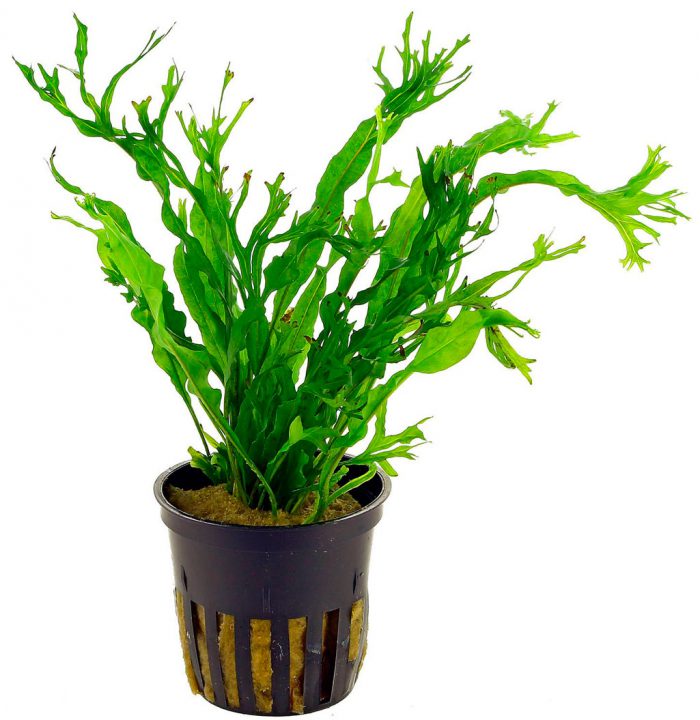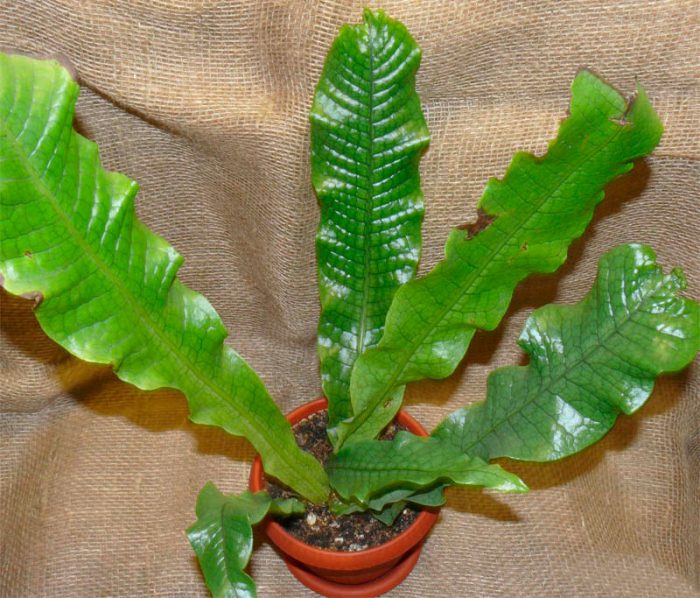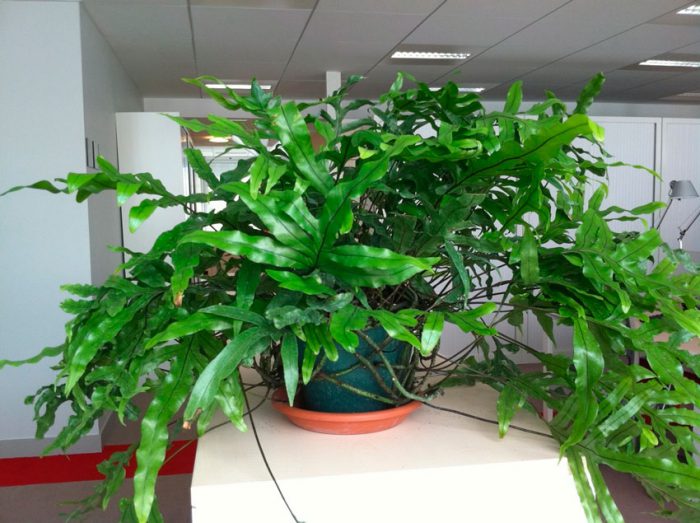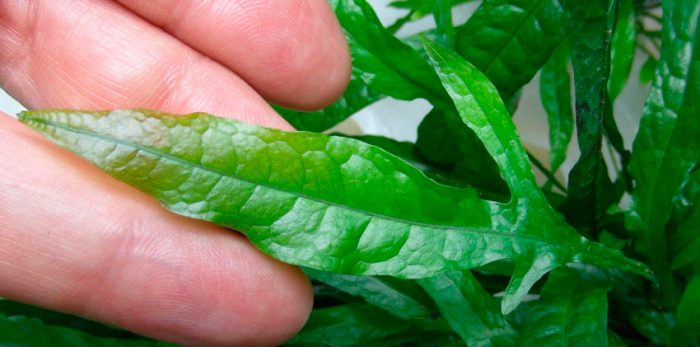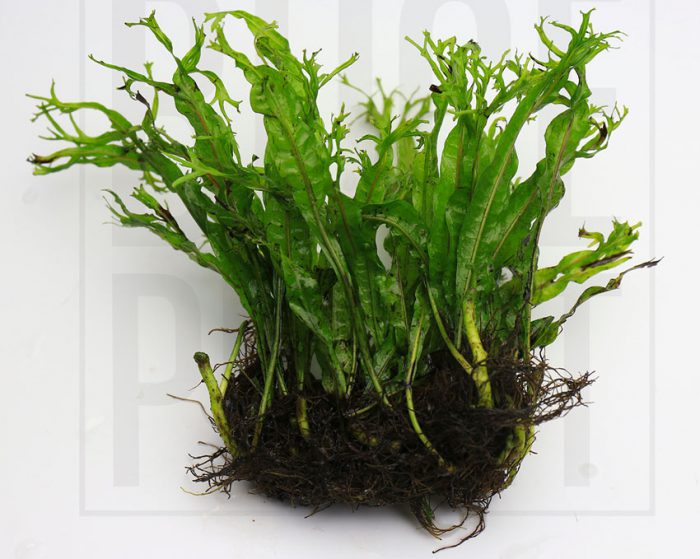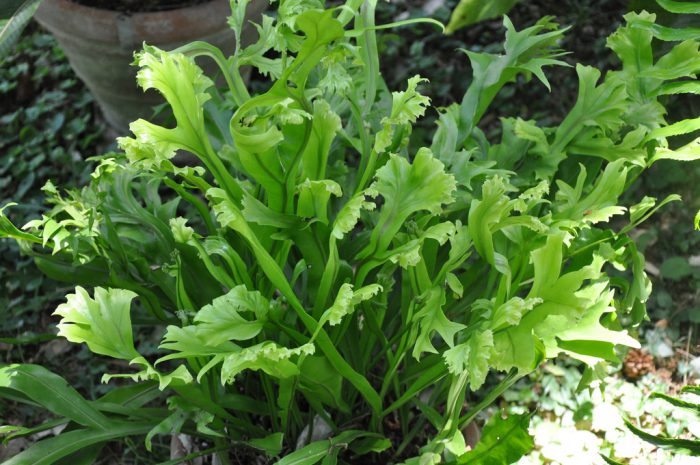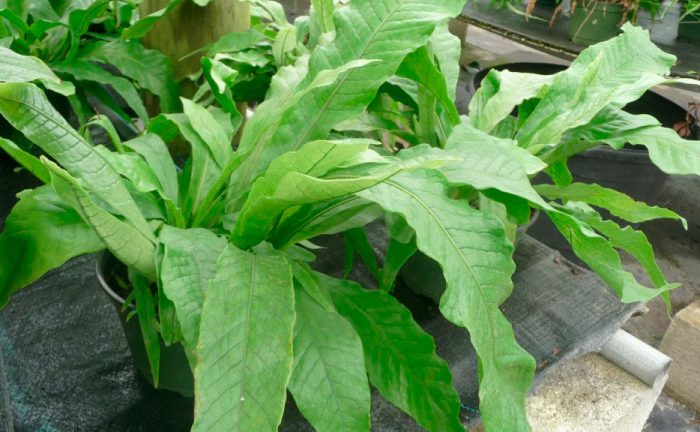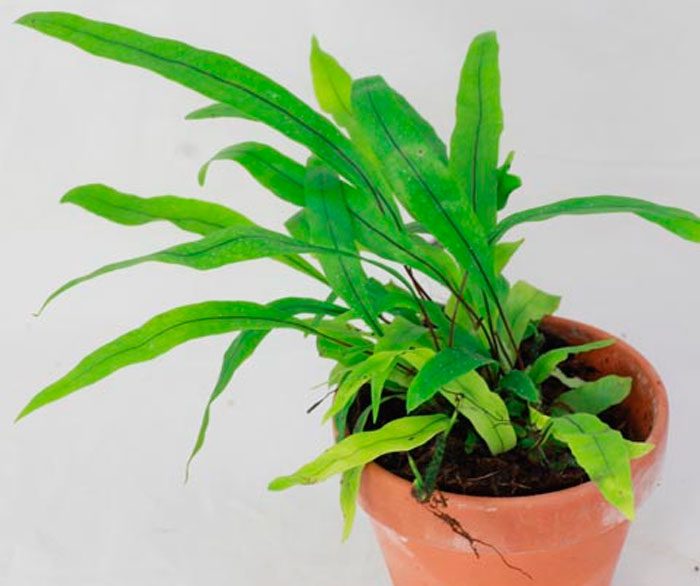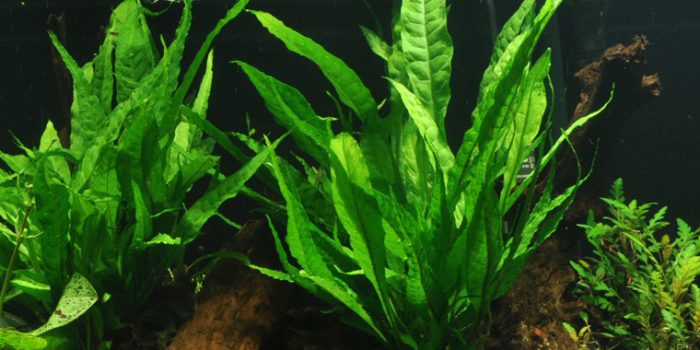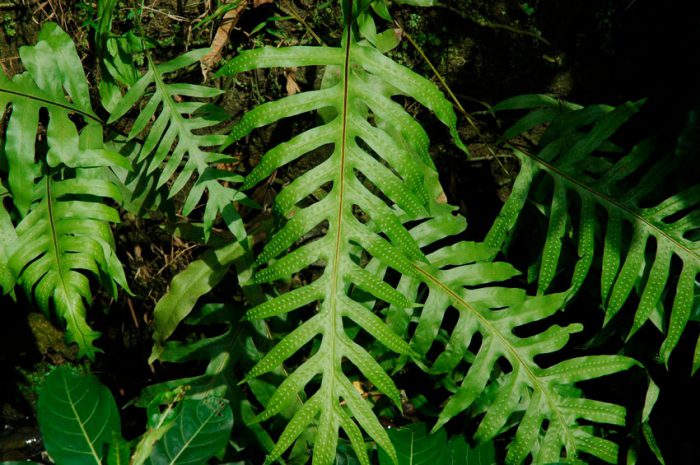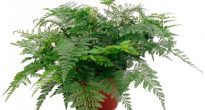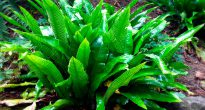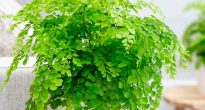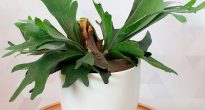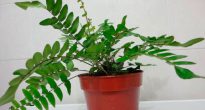Fern is a very ancient plant that never ceases to amaze with its unusual and very spectacular appearance. Among such plants, there are both species with vayyas familiar to all, and with very unusual and original ones. Thus, microorum stands out from other ferns for its splendor and originality. The leaves have a very unusual shape, they are wide and wavy. Such shiny leaf plates are collected in a dense, almost tangled weave. A crocodile pattern on the surface of glossy foliage adds unusualness to the plant itself. This plant is still not very common, but its popularity is becoming more and more every day. So, it is ideal for decorating both ordinary living rooms and a kitchen or bathroom. It is very easy to care for this fern, plus it is a fast growing plant.
Description of microorum
The first time they see microorum, everyone admires the density and curliness of its leaves, as well as its spectacular appearance. These plants are not capricious and undemanding to care for. Over the years, they acquire an increasingly spectacular appearance, so slender bushes become very lush and curly. Such a fern will perfectly complement any style of the apartment, while it can decorate almost every room and, which is important, its appearance always retains its originality and individuality. These plants are popularly nicknamed "crocodiles", and all because on the surface of their unusual leaf plates there is a mesh vein, which gives a clear external resemblance to the skin of such predators. Such a fern is directly related to the family of the centipede (Polypodiaceae), and its homeland is Oceania, Australia, as well as Southeast Asia.
Compact plants such as Microsorum can be 25 to 50 centimeters tall and have a creeping rhizome. It is not uncommon for the roots of this plant to crawl out of the soil onto its surface. In length, leaf plates of microsores reach no more than 60 centimeters, but this is in room conditions. In a wild plant, the length of wai can reach 100 centimeters. Spectacular curtains are formed from sessile or petiolate leaves.Leaf plates can be simple, narrow-elliptical, as well as pinnate, dissected into fairly wide and large lobes (as a rule, there are from 3 to 5 segments).
Young (juvenile) frond outwardly have a great similarity with a plant such as sorrel. As they grow, the leaves change, while they become dissected, more delicate and spectacular. The surface of the sheet plates is wavy and uneven, while the edge is also unevenly wavy. Such leaves curl, curl, due to which the fern has an unusual curly appearance. Sori, which are reddish-brown spots on the surface of the leaves, are placed along the central vein in a row or on the seamy surface (unevenly). Uncovered sporangia represent the reproductive organ where spores form. They can be both unicellular (in a large number of lower plants and fungi) and multicellular (in higher plants). The word sporangia itself, translated from Greek, means "spóra" - "sowing, seed" and "angéion" - "vessel, receptacle."
Growing microorum at home
Microsorum is suitable for growing both experienced growers and beginners. This genus of plants is not capricious and rather hardy, despite the fact that it requires high humidity. So, if not very big mistakes in care are made, then the plant will recover quickly enough.
Illumination
One of the disadvantages of such a plant, which distinguishes it from other ferns, is light-requiring. The fact is that good lighting is required for its normal growth and development, but you should not forget that it should be diffused. So, experienced florists recommend choosing an east or west orientation window for it. In winter, experts advise using supplementary lighting so that the fern retains its spectacular appearance.
At the moment, you can buy microorum in a flower shop, which grows normally in a small partial shade or with light shade. To be sure exactly what degree of illumination the plant needs, ask the seller about it.
Temperature
This fern is very fond of warmth. So, the minimum permissible air temperature in the room where it is located is 20 degrees. The heat is not terrible for them, but hypothermia can lead to death. The recommended temperature is 21-28 degrees. It is worth remembering that the soil in the pot should not be strongly cooled. In order to maintain it at the proper level, it is recommended to put the flower pot on a special stand. This will help to avoid cooling the soil in the container from the windowsill.
Microsorum is a very thermophilic plant and in no case should it be transferred to fresh air in summer. Also, when airing a room, it is imperative to protect the flower from a draft.
How to water
This plant, like other ferns, loves abundant regular watering. But at the same time it is necessary to ensure that no stagnation of liquid occurs in the soil. So, it is recommended to water it in the warm season after the topsoil dries out. For such a plant, short droughts are not terrible. In winter, watering is carried out as soon as a couple of days have passed after the top layer of the substrate dries.
You need to water such a flower with exceptionally soft water. So, the best option would be melt or rainwater.
Air humidity
It grows normally in ordinary flower pots on the windowsill, as well as in humid florariums with paludariums. If microorum grows like a potted plant, then it must be moistened as often as possible (at least 2-3 times) from a spray bottle. Also, in order to increase the humidity of the air, you can pour pebbles into a wide pan or put sphagnum and pour in a little liquid. Humidifiers can also be used.
Fertilizer
You need to feed such a fern only during the growing season, which lasts from April to August (inclusive). This procedure is performed once every 2-3 weeks. For this, organic, universal complex fertilizers or those designed specifically for ferns are suitable.
Features of transplantation and selection of soil mixture
Microsorum is transplanted, as a rule, after its root system ceases to fit in the pot. As a rule, this procedure is carried out 1 time in 2 or 3 years. This is best done in February – March, when the fern begins to grow intensively.
Such a plant does not need the usual flower pot, but a very low and wide container. So, for planting it, a flowerpot with legs, a hanging planter, and a decorative stand are perfect.
For planting, it is recommended to choose commercial fern soil. You can also prepare the soil mixture yourself, but remember that it must be loose and allow air to pass through well. The optimal composition of the substrate: leaf soil, sand and peat, taken in a ratio of 1: 1: 1 or 2: 1: 1. It is also recommended to add charcoal, moss or pine bark to the finished substrate. Soil pH should be 5.5-7.0.
Before placing a plant in a pot, a good drainage layer is made at its bottom, which should be 2-3 centimeters in height. The transplant must be carried out extremely carefully, since the fern reacts negatively to the slightest damage to its root system. Experienced florists recommend transplanting using the transshipment method. When the plant is transplanted, it must be placed in a shaded place with a fairly high air humidity for 3–7 days. If desired, the plant can be made a greenhouse or a plastic cap.
Pests and diseases
A plant such as microorum is highly resistant to diseases, but very low air humidity can harm it. If a plant infected with scale insects is placed next to the microorum, then these pests can quickly get over to it. It should also be remembered that if you do not regularly moisten the foliage from the sprayer, this can cause a spider mite to settle on the plant. In order to get rid of these harmful insects, experts advise that it is imperative to increase the humidity of the air, and also try to remove them mechanically. If the fern is very heavily infested, then an insecticidal treatment of the appropriate action may be required. Also, infection with such common pests as whitefly, thrips and mealybugs.
As a rule, the flower begins to ache only due to the fact that the rules for caring for it are violated. So:
- The tips of the leaf plates dry out - most likely the earthen lump has dried up, it should be watered regularly and abundantly.
- The leaves change their color to yellow - overly intense lighting.
- The plant stops growing - due to the fact that direct rays of the sun fall on it.
- Drying of sheet plates - there is an excessively low air humidity in the room.
- The leaves lose their rich color, become pale and lethargic - Incorrect application of top dressing to the soil.
- The flower grows very slowly or does not grow at all, its leaves lose their spectacular appearance - this usually happens due to the fact that the fern has little light.
Breeding features
Most often, flower growers propagate microorum by dividing the rhizome. It should be remembered that it is recommended to carry out such a procedure during the transplant process, and this can be done every time. The strips must be left in the fresh air so that the cut sites dry thoroughly. After that, it is imperative to process such places with crushed charcoal. It is necessary to plant delenki according to the same rules as adult microorums during transplantation.
In very rare cases, growers try to grow such a plant from spores. However, this is a rather laborious and complex process.So, in order for shoots to appear, it will be necessary to provide the bottom heating of the container. Also, for this, the drying of seed (spores) and its germination on peat are often used, while the container is placed in a darkened place with a sufficiently high air humidity.
Main types
This genus unites about 50 plant species, but at the same time, as a rule, only 3 are grown at home.
Microsorum punctatum
The short rhizome of this plant is creeping. Short petiolate very rigid leaves have a narrow elliptical shape. In height, the formed curtains reach only 30 centimeters and are outwardly similar to sorrel.
Microsorum banana (Microsorum musifolium)
This type is not very popular. Over time, such a plant begins to release shoots that reach 1 meter in length. Its leathery leaves have an unusual appearance. On their surface are mesh veins, and in this species, the foliage is most similar to crocodile skin. Also, the leaves are very similar in appearance to banana leaves.
Microsorum diversifolium (Microsorum diversifolium)
The leaves of a rich color are divided into segments from 3 to 5 pieces, which have a wavy-oval shape. If you touch them, you can feel a very pleasant aroma.
Pterygoid microsorum (Microsorum pteropus)
Also, a species called microsorum pteropus is gaining more and more popularity among aquarists. It is widely used to decorate aquariums, or rather their back or middle part.
Microsorum scolopendria
Not so long ago, the microsorum scolopendria species was especially popular. However, today this plant belongs to the Phymatodes scolopendria family. And that's all, because the fronds and the growth form of this plant are more like nephrolepsis, and not microorums.

